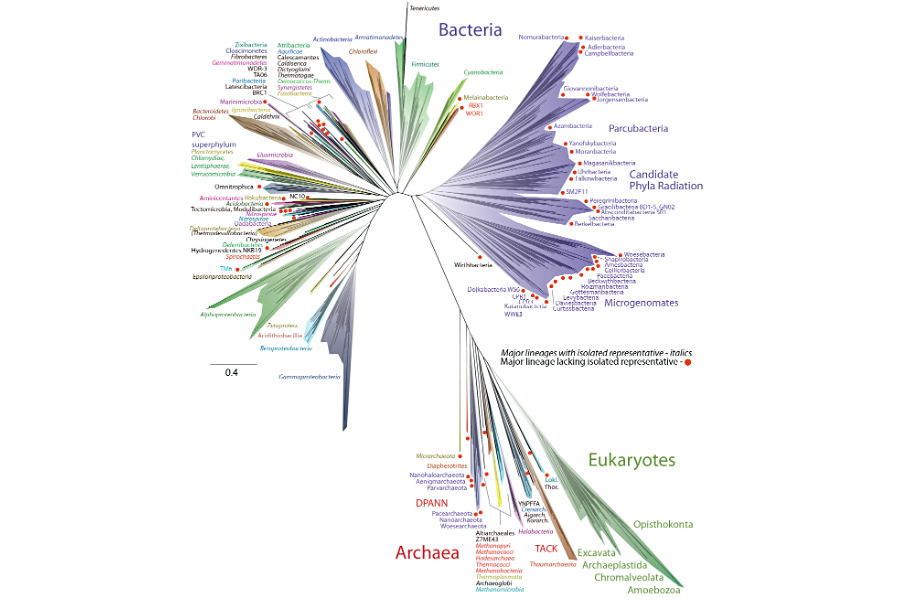Newly discovered microbes expand tree of life, say scientists
Loading...
If you are alive on Earth, there's a good chance you're microscopic.
"From a diversity perspective, 95 percent" of life on this planet is smaller than the eye can see, Laura Hug, an environmental microbiologist at the University of Waterloo in Canada says. And that collection of microorganisms just got a lot more complex.
More than 1,000 previously undocumented microbes are reported in a paper published Monday in the journal Nature Microbiology, authored by Dr. Hug, as a postdoctoral fellow at the University of California, Berkeley, along with colleagues there. These additions greatly expand the tree of life, a model used by biologists to describe the phylogenetic relationships between all known species, living and extinct.
"The tree itself is a depiction of the relationship of all of the organisms that are on the planet, all living things," Hug tells The Christian Science Monitor in an interview. "That includes humans and plants and the things we can see, and it also includes all of the microorganisms that are too small to see with the naked eye."
The new additions are largely bacteria and archaea, two microscopic ancient lineages of life that were once thought to be the same. Together, they make up the vast majority, 95 percent, of life forms on Earth.
"Keep in mind that they've had 2 billion years longer to develop and to diversify than the eukaryotes [beings, like animals, with more complex cellular structure]. The eukaryotes emerged later, so they're running on a disadvantage," Hug says.
This new study was made possible by a scientific breakthrough. Previously, scientists looking to identify new organisms by their genomes would isolate and cultivate the cells in a lab. But not all organisms can survive and grow in that environment. Many of these microorganisms depend on other organisms. But now, using genome-based approaches developed in the past two decades, scientists are able to dig into the DNA of microbes in their environment.
The organisms in this study were found in a wide range of places. Some were found in mundane places like sediments, while others were in extreme environments, like a hot spring in Yellowstone National Park, or salt flats in the Atacama Desert. The researchers even found new diversity inside a dolphin's mouth.
"The tree of life is an underlying structure of diversity of life on Earth," Hug says. And adding these lineages to the tree highlights where researchers can hunt for further lineages and map out the relationships between different organisms.
But Gary Olsen, a microbiologist at the University of Illinois who was not part of this study, is skeptical of how these new, diverse lineages fit into the tree, and what those relationships actually are. "I have no good sense of how profound is this biological diversity" based on the new data, he tells the Monitor.
Although Hug's research ultimately suggests a revision of the tree of life, she says the team's goal was to investigate the diversity of life on Earth rather than use this structure to answer questions about the evolution of life over time.
One of the big open questions, says Hug, is about the relationship between the three domains of life: bacteria, archaea, and eukaryotes. But "this dataset and this study does not shed any light on that question whatsoever, and it wasn't meant to."
"It's more of a show of technical tour du force than it is something that comes with obvious biological implications at least from my perspective," Dr. Olsen says of the paper
Hug expects scientists to further expand on her work, both by identifying more previously unknown organisms and by focusing in on certain lineages to investigate evolutionary relationships.
"This is a dataset that people can build on," she says. In fact, "it might already be out of date" if other research teams are already adding genome sequences.








